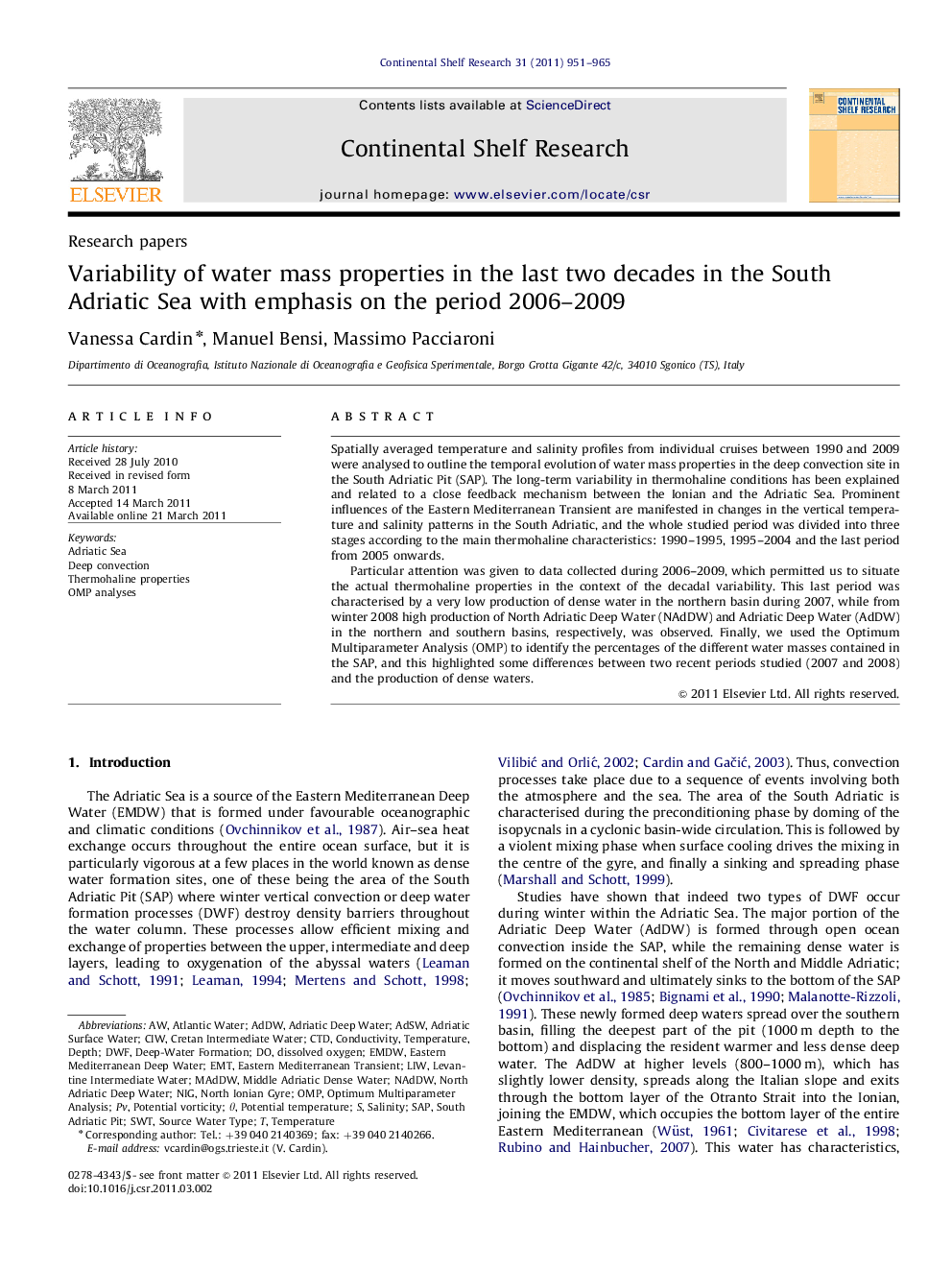| کد مقاله | کد نشریه | سال انتشار | مقاله انگلیسی | نسخه تمام متن |
|---|---|---|---|---|
| 4532782 | 1325146 | 2011 | 15 صفحه PDF | دانلود رایگان |

Spatially averaged temperature and salinity profiles from individual cruises between 1990 and 2009 were analysed to outline the temporal evolution of water mass properties in the deep convection site in the South Adriatic Pit (SAP). The long-term variability in thermohaline conditions has been explained and related to a close feedback mechanism between the Ionian and the Adriatic Sea. Prominent influences of the Eastern Mediterranean Transient are manifested in changes in the vertical temperature and salinity patterns in the South Adriatic, and the whole studied period was divided into three stages according to the main thermohaline characteristics: 1990–1995, 1995–2004 and the last period from 2005 onwards.Particular attention was given to data collected during 2006–2009, which permitted us to situate the actual thermohaline properties in the context of the decadal variability. This last period was characterised by a very low production of dense water in the northern basin during 2007, while from winter 2008 high production of North Adriatic Deep Water (NAdDW) and Adriatic Deep Water (AdDW) in the northern and southern basins, respectively, was observed. Finally, we used the Optimum Multiparameter Analysis (OMP) to identify the percentages of the different water masses contained in the SAP, and this highlighted some differences between two recent periods studied (2007 and 2008) and the production of dense waters.
► Temporal evolution of water mass properties in the deep convection site in the SAP.
► Adriatic–Ionian Sea linked by means of the Bimodal Oscillating System mechanism.
► Influences of the EMT manifested in changes in the vertical thermohaline patterns.
► OMP analysis applied to obtain the contribution of the water masses present.
Journal: Continental Shelf Research - Volume 31, Issue 9, 1 June 2011, Pages 951–965